247 scholarly books by University Press of New England and 13
start with I
247 scholarly books by University Press of New England and 13
247 scholarly books by University Press of New England
13 start with I start with I
13 start with I start with I

I Heart Obama
Erin Aubry Kaplan
University Press of New England, 2016
In his nearly two terms as president, Barack Obama has solidified his status as something black people haven’t had for fifty years: a folk hero. The 1960s delivered Malcolm X and Martin Luther King, forever twinned as larger-than-life outsiders and truth tellers who took on racism and died in the process. Obama is different: Not an outsider but president, head of the most powerful state in the world; a centrist Democrat, not the face of a movement. Yet he is every bit a folk hero, doing battle with the beast of a system created to keep people like him on the margins. He is unique among presidents and entirely unique among black people, who never expected to have a president so soon. In I Heart Obama, journalist Erin Aubry Kaplan offers an unapologetic appreciation of our highest-ranking “First” and what he means to black Americans. In the process, she explores the critiques of those in the black community who charge that he has not done enough, been present enough, been black enough to motivate real change in America. Racial antipathy cloaked as political antipathy has been the major conflict in Obama’s presidency. His impossible task as an individual and as a president is nothing less than this: to reform the entire racist culture of the country he leads. Black people know he can’t do it, but will support his effort anyway, as they have supported the efforts of many others. Obama’s is a noble and singular story we will tell for generations. I Heart Obama looks at the story so far.
[more]

The Ice Bucket Challenge
Pete Frates and the Fight against ALS
Casey Sherman and Dave Wedge
University Press of New England, 2017
While everyone knows of the Ice Bucket Challenge, the viral craze that swept the nation in summer 2014, too few know the truly inspirational story behind it. Pete Frates was a man at war with his own body. A man whose love for others was unshakable. A man who refused to fight alone, and in so doing mobilized a global army to combat one of the most devastating diseases on earth: ALS, or Lou Gehrig’s disease. When disease crippled Frates, the former Boston College baseball star turned tragedy into inspiration. Pete’s story is a testament to the power of love, the steadfastness of family, the generosity of strangers, and the compassion of crowds. Half of the authors’ proceeds will go to the Frates family.
[more]
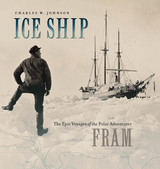
Ice Ship
The Epic Voyages of the Polar Adventurer Fram
Charles W. Johnson
University Press of New England, 2014
In the golden age of polar exploration (from the mid-1800s to the early 1900s), many an expedition set out to answer the big question—was the Arctic a continent, an open ocean beyond a barrier of ice, or an ocean covered with ice? No one knew, for the ice had kept its secret well; ships trying to penetrate it all failed, often catastrophically. Norway’s charismatic scientist-explorer Fridtjof Nansen, convinced that it was a frozen ocean, intended to prove it in a novel if risky way: by building a ship capable of withstanding the ice, joining others on an expedition, then drifting wherever it took them, on a relentless one-way journey into discovery and fame . . . or oblivion. Ice Ship is the story of that extraordinary ship, the Fram, from conception to construction, through twenty years of three epic expeditions, to its final resting place as a museum. It is also the story of the extraordinary men who steered the Fram over the course of 84,000 miles: on a three-year, ice-bound drift, finding out what the Arctic really was; in a remarkable four-year exploration of unmapped lands in the vast Canadian Arctic; and on a two–year voyage to Antarctica, where another famous Norwegian explorer, Roald Amundsen, claimed the South Pole. Ice Ship will appeal to all those fascinated with polar exploration, maritime adventure, and wooden ships, and will captivate readers of such books as The Endurance, In the Heart of the Sea, and The Last Place on Earth. With more than 100 original photographs, the book brings the Fram to life and light.
[more]
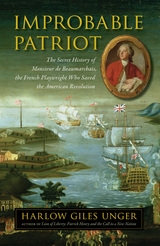
Improbable Patriot
The Secret History of Monsieur de Beaumarchais, the French Playwright Who Saved the American Revolution
Harlow Giles Unger
University Press of New England, 2011
Pierre-Augustin Caron de Beaumarchais was an eighteenth-century French inventor, famed playwright, and upstart near-aristocrat in the court of King Louis XVI. In 1776, he conceived an audacious plan to send aid to the American rebels. What’s more, he convinced the king to bankroll the project, and singlehandedly carried it out. By war’s end, he had supplied Washington’s army with most of its weapons and powder, though he was never paid or acknowledged by the United States. To some, he was a dashing hero—a towering intellect who saved the American Revolution. To others, he was pure rogue—a double-dealing adventurer who stopped at nothing to advance his fame and fortune. In fact, he was both, and more: an advisor to kings, an arms dealer, and author of some of the most enduring works of the stage, including The Marriage of Figaro and The Barber of Seville.
[more]

In Julia's Kitchen
Practical and Convivial Kitchen Design Inspired by Julia Child
Pamela Heyne and Jim Scherer
University Press of New England, 2016
“Most architects I know don’t know anything about cooking, and their designs are not practical for cooks!” Julia Child wrote to architect Pamela Heyne. Indeed, our contemporary kitchens are showplaces with islands, hidden appliances, and cold stone surfaces. They resemble laboratories more than the heart of the home, and they are neither cook friendly nor family friendly. American culinary icon Julia Child embraced the significance of the family meal and was devoted to sharing delicious food with friends and family at the comfortable dining table in her kitchen, a place where conversation was as important as cuisine. Pamela Heyne and Julia’s long-time food photographer Jim Scherer collaborate to share Julia’s kitchen design and lifestyle concepts in this book, which examines the kitchens in her Cambridge, Massachusetts, home; at la Pitchoune, the Childs’ French vacation retreat; and in her television studio. The authors reveal which materials, layouts, and equipment Julia preferred and why, providing practical advice interspersed with Julia’s inimitable, wry humor. They bring Julia’s wisdom into the contemporary kitchen, exploring current trends, including modern green sensibilities, and varied styles of kitchens, featuring architectural designs by Heyne, Jacques Pepin’s kitchen, a renovation Julia Child consulted on for PBS’s This Old House, several celebrity home kitchens, and more.
[more]
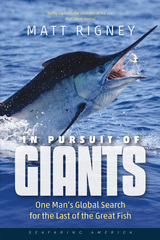
In Pursuit of Giants
One Man's Global Search for the Last of the Great Fish
Matt Rigney
University Press of New England, 2017
For millennia the great fish—marlin, bluefin tuna, and swordfish—have reigned over the world’s oceans and awed human beings. Naturalists, photographers, sportfishermen, and writers from Zane Grey to Ernest Hemingway have been inspired by their beauty, power, and sheer size. But like much other marine life today, these fish face perilous reductions in their populations due to destructive and illegal fishing, inept fisheries management practices, and dramatic changes in ocean ecology, including those wrought by climate change. In Pursuit of Giants is a moving elegy and a call to arms for the protection of these creatures, as well as a five-year, 75,000-mile global adventure story that takes author Matt Rigney on a quest to discover how once-thriving species are now threatened. Rigney’s pilgrimage to encounter these giants takes him from the sportfishing mecca of Cabo San Lucas, to the Great Barrier Reef, from New Zealand to Nova Scotia, Japan and the Mediterranean, as he joins commercial and sport fishermen, marine biologists, fish-farming pioneers, and ocean activists to investigate the dangers these species face, and the various efforts being made—or not—to protect them.
[more]

In Pursuit
The Hunt for the Beltway Snipers
David Reichenbaugh
University Press of New England, 2018
October 2, 2002. A bullet pierced the window of a crafts store in Maryland, just missing the cashier. But other bullets hit their targets. In Pursuit follows the hunt for the Beltway snipers during the twenty-three-day shooting spree that terrorized Maryland, Virginia, and the District of Columbia. David Reichenbaugh—the criminal intelligence operations commander for the Maryland State Police, and commanding officer at the scene during the snipers’ capture in Myersville, Maryland—played a major role in the investigation from the first day of the killing spree through its final act, as the snipers were cornered in a rest area in western Maryland. He is one of very few people who know the complete details of the investigation and capture of the snipers. Working against the clock with few clues and little evidence, hundreds of investigators from federal, state, county, and city law enforcement agencies struggled to find answers to the questions: Who were the killers? Was their choice of victims random? And most of all, Why did they kill? When the killers began leaving notes to taunt the police, investigators were finally able to begin assembling a picture, piercing the fog of uncertainty and terror that filled the region.
[more]

In the Evil Day
Violence Comes to One Small Town
Richard Adams Carey
University Press of New England, 2015
On the afternoon of August 19, 1997, John Harrigan—owner and publisher of the News and Sentinel newspaper in Colebrook, New Hampshire—arrived at his building to find the woman he loved lying dead in the parking lot. Lawyer Vickie Bunnell had been shot and killed by a local carpenter wielding an assault rifle. By then, three more people were already dead or dying. More mayhem was to ensue in an afternoon of plot twists too improbable for a novel. The roots of the incident stretch back twenty-five years, with tendrils deep in the history of New England’s North Country. These bloody events shocked America and made headlines across the world. Hundreds of local citizens became unwilling players in the drama—friends and colleagues of the dead, men and women who were themselves real or potential targets, along with their neighbors in law enforcement—but the town and its inhabitants were never passive victims. From the first shot fired that day, they remained courageously determined to survive. This is the story of that town, those people, and that day. In the Evil Day is a moving portrait of small-town life and familiar characters forever changed by sudden violence.
[more]
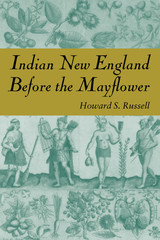
Indian New England Before the Mayflower
Howard S. Russell
University Press of New England, 1983
In offering here a highly readable yet comprehensive description of New England's Indians as they lived when European settlers first met them, the author provides a well-rounded picture of the natives as neither savages nor heroes, but fellow human beings existing at a particular time and in a particular environment. He dispels once and for all the common notion of native New England as peopled by a handful of savages wandering in a trackless wilderness. In sketching the picture the author has had help from such early explorers as Verrazano, Champlain, John Smith, and a score of literate sailors; Pilgrims and Puritans; settlers, travelers, military men, and missionaries. A surprising number of these took time and trouble to write about the new land and the characteristics and way of life of its native people. A second major background source has been the patient investigations of modern archaeologists and scientists, whose several enthusiastic organizations sponsor physical excavations and publications that continually add to our perception of prehistoric men and women, their habits, and their environment. This account of the earlier New Englanders, of their land and how they lived in it and treated it; their customs, food, life, means of livelihood, and philosophy of life will be of interest to all general audiences concerned with the history of Native Americans and of New England.
[more]

Inferno in Chechnya
The Russian-Chechen Wars, the Al Qaeda Myth, and the Boston Marathon Bombings
Brian Glyn Williams
University Press of New England, 2015
In 2013, the United States suffered its worst terrorist bombing since 9/11 at the annual running of the Boston Marathon. When the culprits turned out to be U.S. residents of Chechen descent, Americans were shocked and confused. Why would members of an obscure Russian minority group consider America their enemy? Inferno in Chechnya is the first book to answer this riddle by tracing the roots of the Boston attack to the Caucasus Mountains of southern Russia. Brian Glyn Williams describes the tragic history of the bombers’ war-devastated homeland—including tsarist conquest and two bloody wars with post-Soviet Russia that would lead to the rise of Vladimir Putin—showing how the conflict there influenced the rise of Europe’s deadliest homegrown terrorist network. He provides a historical account of the Chechens’ terror campaign in Russia, documents their growing links to Al Qaeda and radical Islam, and describes the plight of the Chechen diaspora that ultimately sent two Chechens to Boston. Inferno in Chechnya delivers a fascinating and deeply tragic story that has much to say about the historical and ethnic roots of modern terrorism.
[more]
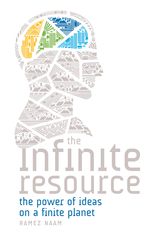
The Infinite Resource
The Power of Ideas on a Finite Planet
Ramez Naam
University Press of New England, 2013
Climate change. Finite fossil fuels. Fresh water depletion. Rising commodity prices. Ocean acidification. Overpopulation. Deforestation. Feeding the world’s billions. We’re beset by an array of natural resource and environmental challenges. They pose a tremendous risk to human prosperity, to world peace, and to the planet itself. Yet, if we act, these problems are addressable. Throughout history we’ve overcome similar problems, but only when we’ve focused our energies on innovation. For the most valuable resource we have isn’t oil, water, gold, or land – it’s our stockpile of useful ideas, and our continually growing capacity to expand them. In this remarkable book, Ramez Naam charts a course to supercharge innovation – by changing the rules of our economy – that can lead the whole world to greater wealth and human well-being, even as we dodge looming resource crunches and environmental disasters and reduce our impact on the planet. “Most books about the future are written by blinkered Pollyannas or hand-wringing Cassandras. Ramez Naam—Egypt-born, Illinois-raised, a major contributor to the computer revolution—is neither. Having thought about science, technology and the environment for decades, he has become that rarest of creatures: a clear-eyed optimist. Concise, informed and passionately argued, The Infinite Resource both acknowledges the very real dangers that lie ahead for the human enterprise and the equally real possibility that we might not only survive but thrive.” —Charles Mann, New York Times bestselling author of 1491 and 1493 “An amazing book. Throughout history, the most important source of new wealth has been new ideas. Naam shows how we can tap into and steer that force to overcome our current problems and help create a world of abundance.” —Peter H. Diamandis, MD, chairman and CEO, X PRIZE Foundation; chairman, Singularity University; and author, Abundance—The Future Is Better Than You Think
[more]
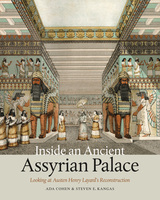
Inside an Ancient Assyrian Palace
Looking at Austen Henry Layard's Reconstruction
Ada Cohen and Steven E. Kangas
University Press of New England, 2016
One of the best-known images of the ancient Near East is an intriguing nineteenth-century color lithograph reconstructing the throne room of an Assyrian palace. Executed shortly after the archaeological rediscovery of Assyria, a land theretofore known only from the Bible, it was published by the most famous among early excavators of Assyrian ruins, Austen Henry Layard. Over time and despite criticisms, the picture has shaped the understanding and reception of ancient Mesopotamian architecture and architectural decoration. Inside an Ancient Assyrian Palace studies this influential image in depth, both at the time of its creation in London in the eventful year 1848 and in terms of its afterlife. A hidden inscription reveals unsuspected contributions by the renowned architect-designer Owen Jones and his colleague the architect-Egyptologist Joseph Bonomi. Also unexpected is the involvement of an enigmatic German artist who later emigrated to America and whose previous career in Europe had been lost to scholarship. This book will be of interest to scholars and students of art history and the ancient Near East. It will also be of relevance to museum visitors and others interested in the ancient world in general, in the art of the nineteenth century, and in design and historical reconstruction.
[more]
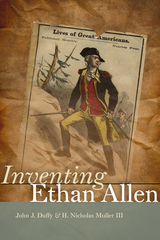
Inventing Ethan Allen
John J. Duffy and H. Nicholas Muller
University Press of New England, 2014
Since 1969, Ethan Allen has been the subject of three biographical studies, all of which indulge in sustaining and revitalizing the image of Allen as a physically imposing Vermont yeoman, a defender of the rights of Americans, an eloquent military hero, and a master of many guises, from rough frontiersman to gentleman philosopher. Seeking the authentic Ethan Allen, the authors of this volume ask: How did that Ethan Allen secure his place in popular culture? As they observe, this spectacular persona leaves little room for a more accurate assessment of Allen as a self-interested land speculator, rebellious mob leader, inexperienced militia officer, and truth-challenged man who would steer Vermont into the British Empire. Drawing extensively from the correspondence in Ethan Allen and his Kin and a wide range of historical, political, and cultural sources, Duffy and Muller analyze the factors that led to Ethan Allen’s two-hundred-year-old status as the most famous figure in Vermont’s past. Placing facts against myths, the authors reveal how Allen acquired and retained his iconic image, how the much-repeated legends composed after his death coincide with his life, why recollections of him are synonymous with the story of Vermont, and why some Vermonters still assign to Allen their own cherished and idealized values.
[more]
READERS
Browse our collection.
PUBLISHERS
See BiblioVault's publisher services.
STUDENT SERVICES
Files for college accessibility offices.
UChicago Accessibility Resources
home | accessibility | search | about | contact us
BiblioVault ® 2001 - 2024
The University of Chicago Press









